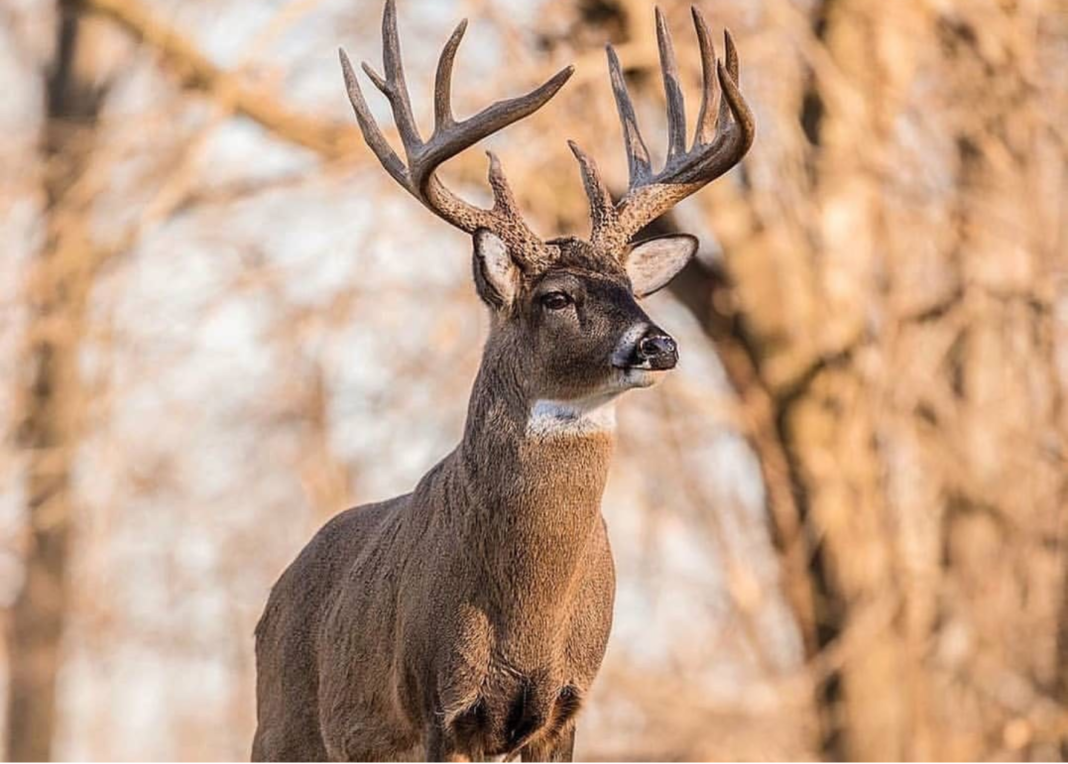The olfactory receptors are not the only reason that the whitetail is a super smeller. The whitetail deer also has an organ in the roof of its mouth called the Jacobson’s organ, providing whitetails with yet again another scent tool to use to distinguish smells. This organ is also highly useful during the rut for locking in on a mature doe. It allows him to know exactly when the does in his area will be in estrus. It is so precise that you can use the buck’s nose against him to know when the rut will be on in that area.
The area in the brain that they use to interpret smell is around nine times the size of the area we use. In fact, they use two parts of the brain to distinguish smell. Research shows that a deer can interpret up to six different smells at one time. So not only can the deer smell the urine at the bottom of your treestand, he can also smell what’s in it: your morning coffee, water, or a Pepsi before you hit the woods possibly. So the next time you hit the treestands my advice to you would be take an empty bottle!
So what do we do to combat the nose? The answer is everything that you can possibly do! There is no way to completely eliminate your scent from the nose of the mature whitetail buck. The only thing we can do is play it safe. Wear scent-masking carbon clothes. Use the wind to your advantage as much as necessary. I myself also liberally apply a cover scent. You can buy it by the gallon so you don’t have to go to the local pro shop every week.
The last thing that I will stress is to keep your area as low impact as possible. The less human intrusion in your hunting area, the better! Good luck this season, and do not underestimate the nose of your opponent. Doing so will more than likely result in you eating tag soup rather than harvesting that mature buck!
Let’s start by comparing our nose to that of an adult beagle dog. Something that many of us know well from their incredible sense of smell used to hunt the fuzzy woodland creatures that we call rabbits. The average dog has around 220 million olfactory receptors in its nose. Compared to the human’s meager 5 million receptors in our nose, that’s a lot. The way it works is that scent molecules in the air travel over these olfactory receptors in the lining or our nostrils, which in turn send electric impulses to the olfactory bulb in our nasal cavity. From there the olfactory bulb sends the signals to our brain, which tell us exactly what we are smelling. So it doesn’t take a rocket scientist to see that a dog with 220 million olfactory receptors can easily smell even the faintest odors in the air. With only 5 million receptors, we are not even in the same country, let alone ballpark.
Now that we have a comparison tool, aka the beagle dog, we can now compare the olfactory receptors to the whitetail’s. The beagle dog and the whitetail are at least in the same ballpark. The average mature whitetail has just a few million shy of 300 million receptors in its long nose. Think about that again: 300 million. These receptors help the whitetails to smell even the faintest odor in the air. Some biologists say that under perfect conditions, a whitetail buck can smell a human as far away as 5 miles. Though we don’t live in perfect conditions, they can smell that good. So the next time you take your beagle dogs out, just remember that when they are running rabbits, and it seems amazing how good they can smell, a deer can smell 30% better than that beagle.



















![The Best Deer Camp Chili [VIDEO] Deer Chili Ingredients, Tomatoes, Chili Spices](/wp-content/uploads/2015/10/Deer-Chili-Deer-Camp-Recipe-218x150.jpg)
![How to Call Elk Early in the Season [VIDEO]](/wp-content/uploads/2016/08/byers003-218x150.jpg)




![Idiots Disturb Hunter: How Would You Have Handled It? [VIDEO]](/wp-content/uploads/2015/10/DSC00110-e1474487693878-100x70.jpg)
![Albino Buck Shocked to Shed His Antlers [VIDEO]](/wp-content/uploads/2015/10/AlbinoDeer-100x70.jpg)